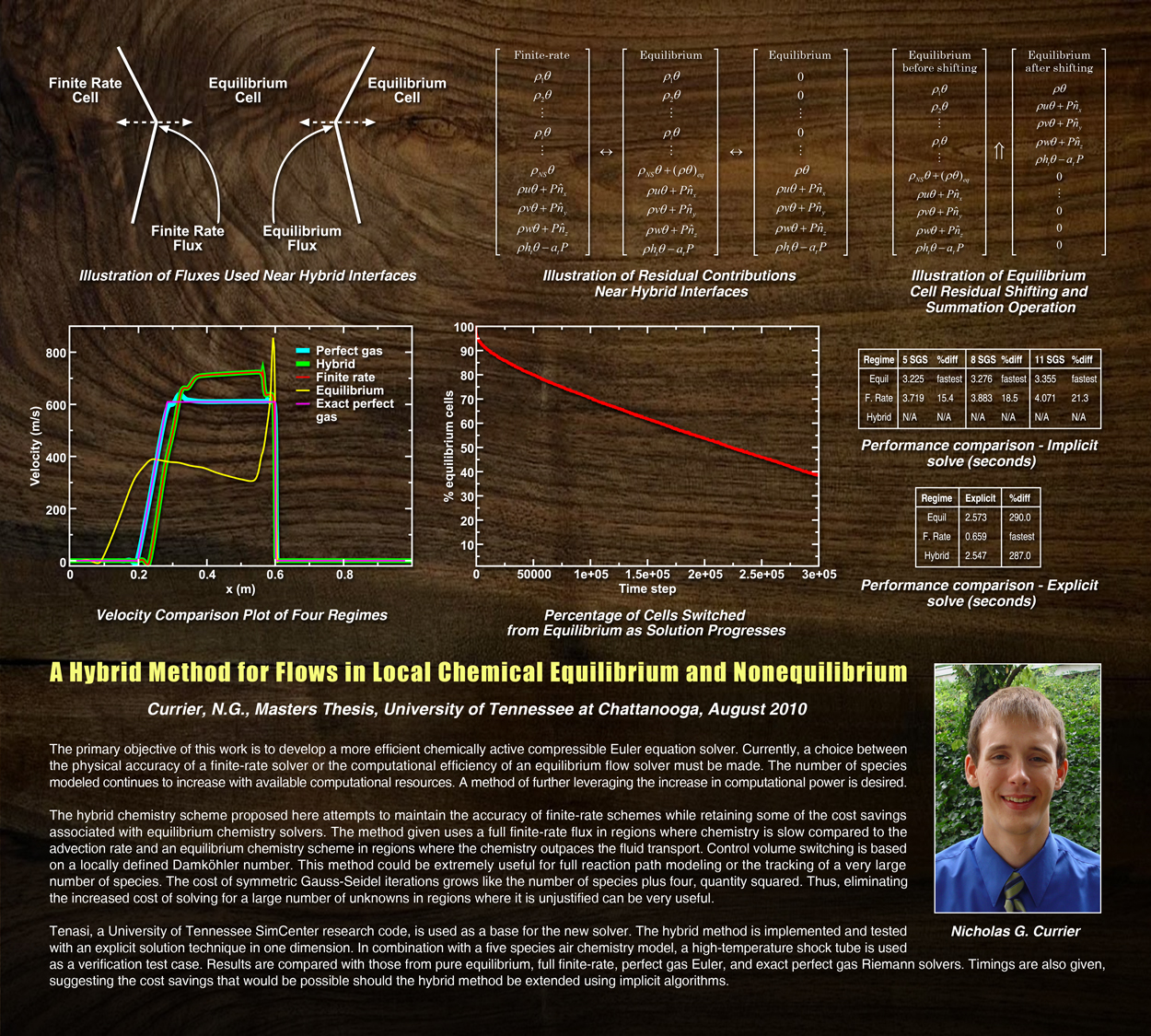Nicholas Currier
A Hybrid Method for Flows in Local Chemical Equilibrium and Nonequilibrium
A Thesis Presented for the Master of Science in Computational Engineering Degree, The University of Tennessee at Chattanooga
Nicholas G. Currier, August 2010
Abstract:
The primary objective of this work is to develop a more efficient chemically active compressible Euler equation solver. Currently, a choice between the physical accuracy of a finite-rate solver or the computational efficiency of an equilibrium flow solver must be made. The number of species modeled continues to increase with available computational resources. A method of further leveraging the increase in computational power is desired.
The hybrid chemistry scheme proposed here attempts to maintain the accuracy of finite-rate schemes while retaining some of the cost savings associated with equilibrium chemistry solvers. The method given uses a full finite-rate flux in regions where chemistry is slow compared to the advection rate and an equilibrium chemistry scheme in regions where the chemistry outpaces the fluid transport. Control volume switching is based on a locally defined Damköhler number. This method could be extremely useful for full reaction path modeling or the tracking of a very large number of species. The cost of symmetric Gauss-Seidel iterations grows like the number of species plus four, quantity squared. Thus, eliminating the increased cost of solving for a large number of unknowns in regions where it is unjustified can be very useful.
Tenasi, a University of Tennessee SimCenter research code, is used as a base for the new solver. The hybrid method is implemented and tested with an explicit solution technique in one dimension. In combination with a five species air chemistry model, a high-temperature shock tube is used as a verification test case. Results are compared with those from pure equilibrium, full finite-rate, perfect gas Euler, and exact perfect gas Riemann solvers. Timings are also given, suggesting the cost savings that would be possible should the hybrid method be extended using implicit algorithms.
